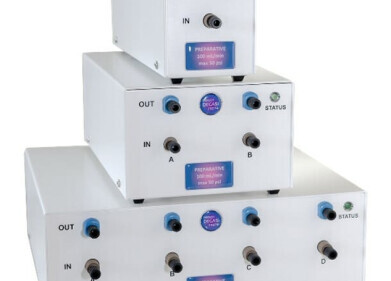Chromatography
Is the PFAS Problem Worse Than We Thought?
Dec 31 2021
When it comes to food safety, Per and Polyfluorinated Alkyl Substances (PFAS) are a major concern. The chemicals are used to manufacture a wide range of products, from stain resistant carpets and grease-proof fast food wrappers to cosmetics and firefighting foams.
PFAS were popularised in the 1940s, with manufacturers coveting the highly durable chemicals made by bonding carbon and fluorine. As well as offering excellent chemical stability, the carbon-fluorine bond is extremely resistant to environmental degradation. PFAS also repel oil and water, making them known surfactants.
The “forever chemical”
While these properties made PFAS ideal for manufacturing durable products, the environmental and public health consequences are severe. PFAS break down very slowly and seep into the natural environment, infiltrating soils, waterways, food sources and even the human body. These enduring properties have seen them dubbed the “forever chemical” with studies detecting PFAS in the blood of humans and animals around the world.
With more than 4000 different types of PFAS seeping into soils and waterways, the chemical class has become a major environmental and public health concern. Tests carried out by the US Environmental Protection Agency have discovered PFAS in a wide range of popular foods, including meat, grain, seafood and dairy products. PFAS have also been detected in vegetables and tap water across the United States. In the UK, some groups warn PFAS is the “new asbestos” and predict criminal, civil and regulatory liability trends could emerge over the coming years.
The dangers of PFAS exposure
The risks of PFAS exposure are well-documented by the U.S. Centres for Disease Control and Prevention (CDC), with a recent report warning the chemicals are linked to liver damage, cancer and increased risk of thyroid disease. PFAS exposure has also been linked to compromised fertility, asthma and other chronic health conditions.
Keeping tabs on PFAS levels
The public health implications of PFAS have made testing a top priority for governments and regulators around the world. While detecting PFAS in simple matrices such as drinking water is relatively straightforward, detecting the chemicals in food, soils and other complex matrices calls for a more sophisticated approach.
A recent collaboration between California-based chemistry solutions company Phenomenex and environmental analytical group Weck Laboratories aimed to bridge the gap between PFAS testing in simple and complex matrices with the development of an exciting new LC-MS/MS method. Find out more about PFAS and the technologies being used to monitor levels in ‘New Concerns about PFAS in Food: The Convergence of Environmental Contamination and Food Safety’
Digital Edition
Lab Asia 31.2 April 2024
April 2024
In This Edition Chromatography Articles - Approaches to troubleshooting an SPE method for the analysis of oligonucleotides (pt i) - High-precision liquid flow processes demand full fluidic c...
View all digital editions
Events
Apr 22 2024 Marrakech, Morroco
Making Pharmaceuticals Exhibition & Conference
Apr 23 2024 Coventry, UK
Apr 23 2024 Kintex, South Korea
Apr 23 2024 Seoul, South Korea
Apr 24 2024 Jakarta, Indonesia




.jpg)













